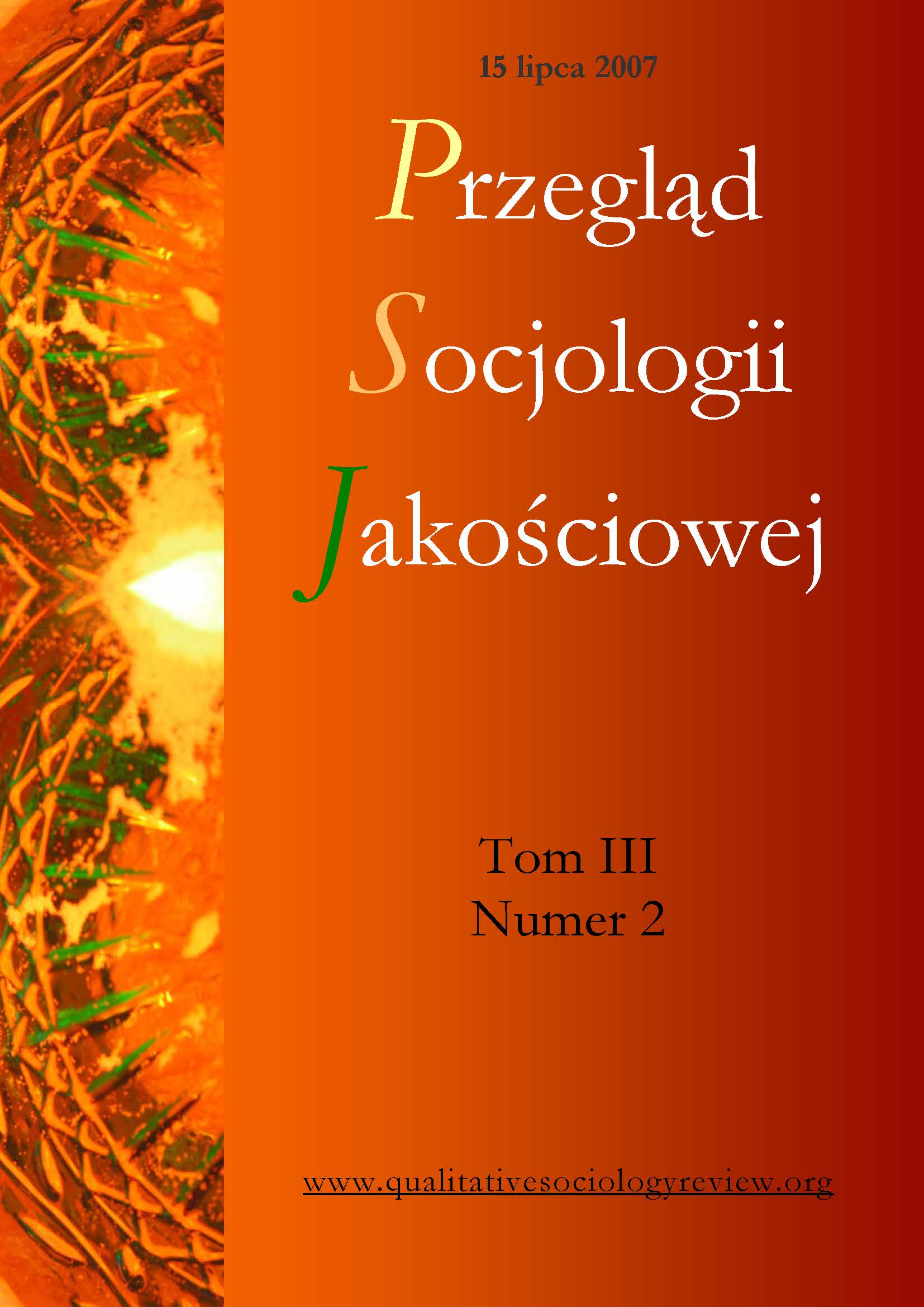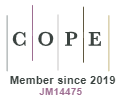Picie jako działanie. Analiza interakcjonistyczna
DOI:
https://doi.org/10.18778/1733-8069.3.2.06Słowa kluczowe:
Interakcjonizm symboliczny, działanie, interakcja, picie alkoholuAbstrakt
Konsumpcję alkoholu w barach rozpatrujemy nie jako czynność jednostkową, czy też zmienną kulturową, ale jako działanie społeczne. Autor koncentruje się na wyjaśnieniu jaki wpływ na spożywanie alkoholu ma obsługa baru, muzycy, strategie właścicieli barów oraz klienci.
Pobrania
Bibliografia
Alexander, Norman, C. Jr. (1964) “Consensus and the mutual attraction in natural cliques; a study of adolescent drinkers.” American Journal of Sociology 60: 395-403
Google Scholar
DOI: https://doi.org/10.1086/223623
Alexander, Norman, C. Jr. and Campbell, E. Q. (1967) “Peer influences on adolescent drinking.” Quarterly Journal of Studies on Alcohol 18: 444-453
Google Scholar
DOI: https://doi.org/10.15288/qjsa.1967.28.444
Anderson, Elijah. (1976) A place on the corner. Chicago: University of Chicago Press.
Google Scholar
Anderson, Nels. (1923) The hobo; the sociology of the homeless man. Chicago: University of Chicago Press.
Google Scholar
Blumer, Herbert. (1969) Symbolic interactionism. Eaglewood Cliffs, N. J. : Prentice- Hall.
Google Scholar
Caudill, Barry D. and Marlatt, Alan G. (1975) “Modelling influences in social drinking: an experimental analogue.” Journal of Consulting and Clinical Psychology 43: 405-415.
Google Scholar
DOI: https://doi.org/10.1037/h0076689
Cavan, Sherri (1966) Liquor license; an ethnography of bar behavior. Chicago: Aldine
Google Scholar
Garlington, Warren K. and Dericco, Denice A. (1977) “The effect of modeling on drinking rate.” Journal of Applied Behavior Analysis 10: 207-211.
Google Scholar
DOI: https://doi.org/10.1901/jaba.1977.10-207
Haer, J. L. (1955) “Drinking patterns and the influence of friends and family.” Quarterly Journal of Studies on Alcohol 16: 178-185.
Google Scholar
DOI: https://doi.org/10.15288/qjsa.1955.16.178
LeMasters, E. E. (1975) Blue collar aristocrats; life styles at a working class tavern. Madinson: University of Wisconsin Press.
Google Scholar
MacAndrew, Craig. and Edgerton, Robert (1969) Drunken comportment: a social explanation. Chicago: Aldine.
Google Scholar
Maddox, George L. (1968) “Role making; negotiations in emergent drinking careers.“ Social Sciences Quarterly 49: 331-349.
Google Scholar
Prus, Robert and Irini, Styllianoss (1980) Hookers, rounders, and desk clerks; the social organization of the hotel community. Toronto: Gage.
Google Scholar
Roebuck, Julian and Frese, Wolfgang (1976) The rendezvous; the case study of an after-hours club. New York: Free Press.
Google Scholar
DOI: https://doi.org/10.1177/089124167600500201
Rubington, Earl (1968) Variations in bottle-gang controls. Rubington, E. and Weinberg, M. S. (eds.) Deviance: the interactionist perspective. New York: Macmillan.
Google Scholar
Scott, Marvin B. and Lyman, Stanford M. (1968) “Accounts.” American Sociological Review 33: 46-62.
Google Scholar
DOI: https://doi.org/10.2307/2092239
Spradley, James P. (1970) You owe yourself a drunk; an ethnography of urban nomads. Boston: Little, Brown.
Google Scholar
Spradley, James P. and Mann, Brenda J. (1975) The cocktail waitress, woman’s work in a man’s world. New York: Wiley.
Google Scholar
Sutherland, Edwin H. (1949) Principles of criminology. Philadelphia: Lippincott
Google Scholar
Thomas, Anthony E. (1978) Class and sociability among urban workers; a study of the bar as a social club. Medical Anthropology 2: 9-30.
Google Scholar
DOI: https://doi.org/10.1080/01459740.1978.9986960
Wallace, Samuel E. (1965) Skid Row as a way of life. Totowa, N. J.: Bedminster Press.
Google Scholar
Winkler, Allan M. (1969) “Drinking on the American frontier.” Quarterly Journal of Studies on Alcohol 29: 413-445.
Google Scholar
DOI: https://doi.org/10.15288/qjsa.1968.29.413
Wiseman, Jacqueline P. (1970) Stations of the lost; the treatment of Skid Row alcoholics. Englewood Cliffs, N. J.; Prentice- Hall.
Google Scholar
Pobrania
Opublikowane
Jak cytować
Numer
Dział
Licencja

Utwór dostępny jest na licencji Creative Commons Uznanie autorstwa – Użycie niekomercyjne – Bez utworów zależnych 4.0 Międzynarodowe.














